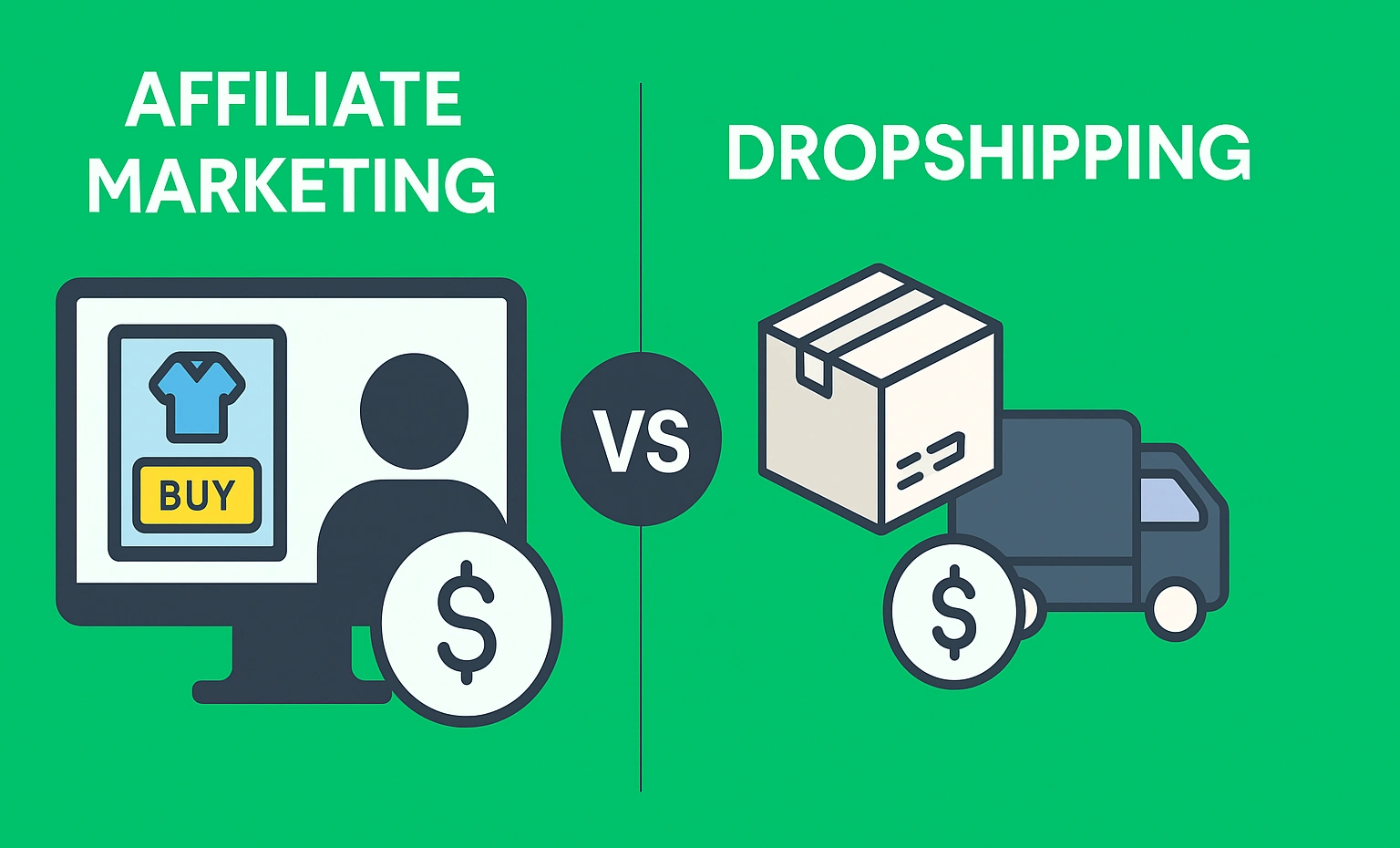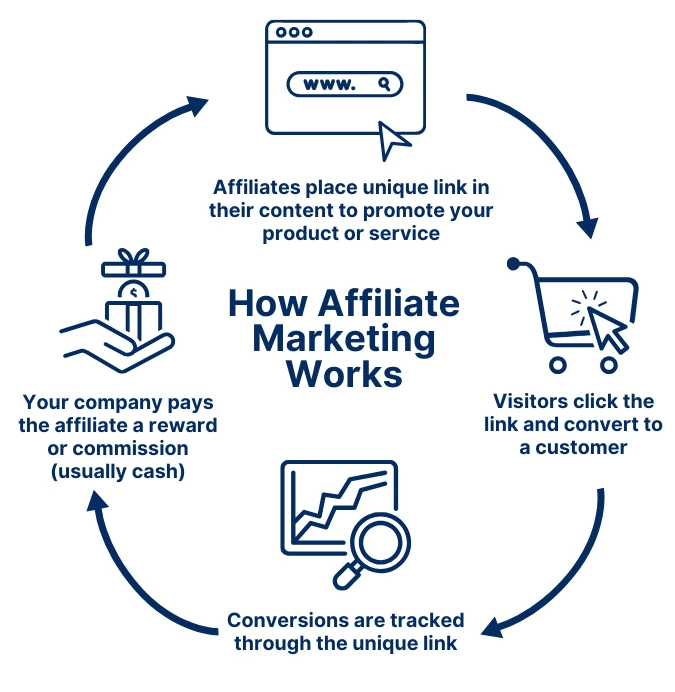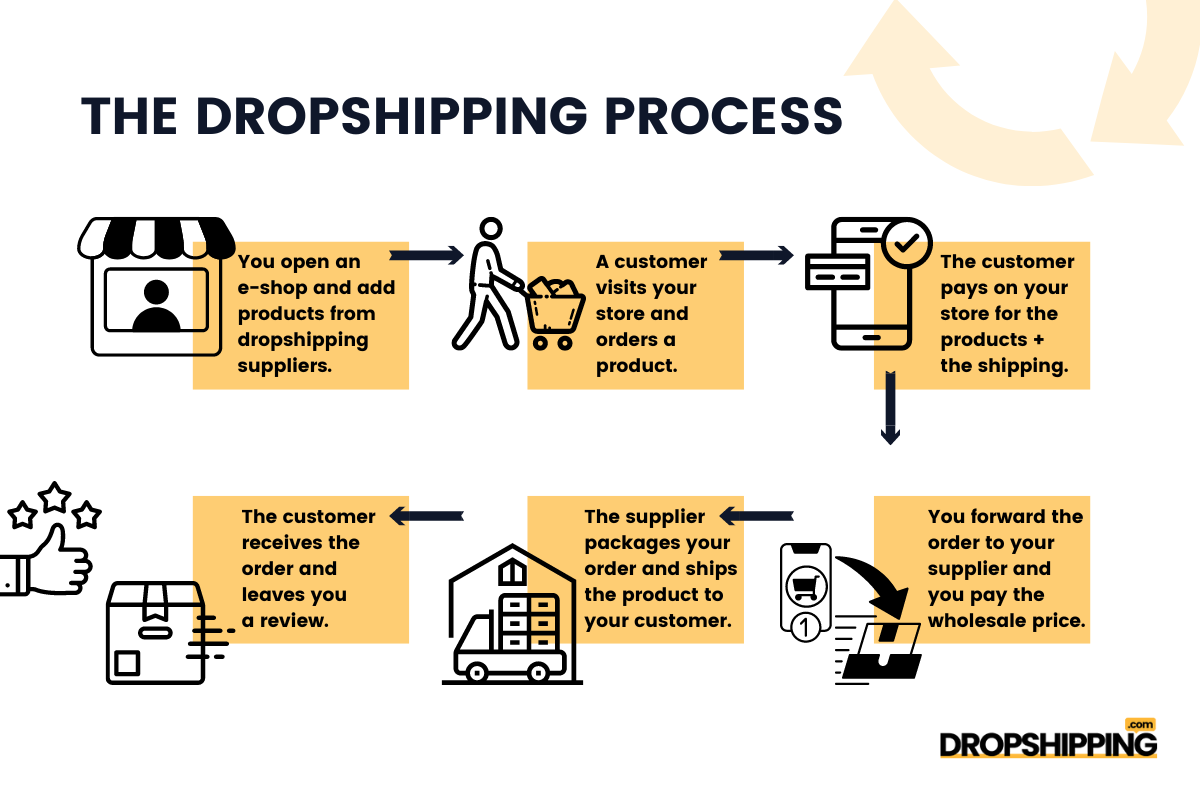Affiliate Marketing vs Dropshipping: Which Is Best for Beginners in 2025
Affiliate marketing vs dropshipping—what’s better for beginners? Compare costs, effort, and income to choose the right online business model.

You want to make money online. That’s the goal.
But let’s be honest—once you start Googling how, you’re hit with a firehose of ideas: affiliate marketing, dropshipping, print-on-demand, blogging, coaching, ecom, Amazon FBA… and on and on. Every “guru” says their way is the best. And if you’re new, it gets loud, fast.
Let me be straight with you: two of the most talked-about options for beginners are affiliate marketing and dropshipping. Both sound simple. Both promise passive income. But they work very differently and they come with different challenges.
This guide isn’t here to hype one over the other. It’s not written to sell you a dream. It’s a straight-up, honest breakdown of how affiliate marketing stacks up against dropshipping for beginners.
You’ll get the facts, side-by-side. What they are, how they make money, what it costs to start, how fast you can earn, and what kind of skills you need.
If you’re just starting out, this guide is for you. No guesswork. No sugarcoating. Just real answers to help you pick the best fit for your goals and lifestyle.
Key Takeaways
- Affiliate marketing is simpler to start. No inventory, no customer service.
- Drop shipping gives more control, but it needs more setup and hands-on work.
- Startup costs are lower with affiliate marketing, making it safer for total beginners.
- Earning potential depends on skills. Creators do better with affiliate, sellers thrive with drop shipping.
- Affiliate is better for passive income, drop shipping fits those ready to hustle.
- There’s no “best for everyone”. Just pick based on your time, skills, and comfort with tech.
- Beginners should start with one model, master it, then test the other if needed.
What Is Affiliate Marketing?
Affiliate marketing is when you earn a commission by promoting someone else’s product or service. You don’t own it. You just recommend it.

How It Works – Step-by-Step:
- You join an affiliate program – like Amazon, ClickBank, or a brand’s direct program.
- You get a unique affiliate link – it tracks anyone who clicks and buys through you.
- You share that link – on your blog, YouTube, email list, social media, wherever.
- Someone clicks and buys – and you earn a cut. That’s your commission.
- The company handles everything else – product, shipping, customer support, refunds.
You’re just the middleman—but a smart one who knows how to drive traffic and influence buying.
For Example:
Let’s say you review tech gadgets on YouTube. You post a video about a new wireless earbud. In the video description, you drop your Amazon affiliate link.
Someone clicks it, buys the earbuds—you get a commission (usually between 1% and 10% depending on the category).
You didn’t make the product. You didn’t ship it. You didn’t deal with the customer. You just talked about it, and made money when someone listened.
Popular Affiliate Platforms:
- Amazon Associates – easy to join, low commissions, but trusted.
- ClickBank – digital products, high commissions (sometimes 50%+).
- CJ Affiliate (formerly Commission Junction) – connects you with big brands.
- ShareASale – solid range of products from physical to digital.
- PartnerStack / Impact / Rakuten – for SaaS and tech tools.
You can also go direct—many companies run their own affiliate programs without using a network.
What Is Drop Shipping?
Dropshipping is when you sell products online without keeping any stock.
A customer buys from your store → you forward the order to a supplier → the supplier ships it directly to the customer.
You handle the marketing, not the packaging or shipping.

How It Works – Step-by-Step:
- You set up an online store – usually with Shopify or WooCommerce.
- You list products from suppliers – like AliExpress, Zendrop, or Spocket.
- A customer buys from your store – they pay you retail price.
- You forward the order to the supplier – and pay the wholesale price.
- The supplier ships the product directly to your customer – with your branding (if offered).
- You keep the profit – the difference between your retail price and what you paid the supplier.
You’re running the storefront. You handle marketing, pricing, and customer questions. But you never touch the product.
For Example:
You build a Shopify store selling kitchen gadgets. You find a $5 garlic chopper on AliExpress. You list it in your store for $15.
Someone visits your site (maybe from a Facebook ad), buys the chopper, and pays $15.
You go to AliExpress, order it for $5, and enter the customer’s address.
AliExpress ships it directly. You just made $10 profit (minus transaction and ad fees).
Popular Drop Shipping Tools & Platforms:
- Shopify – the go-to platform to build your store.
- Oberlo (discontinued, but used to be big) – replaced by other apps.
- DSers – works well with AliExpress.
- Spocket – US/EU suppliers with faster shipping.
- Zendrop – good for branded packaging and upsells.
- CJ Dropshipping – another solid option with global suppliers.
- Printful / Printify – for print-on-demand (t-shirts, mugs, etc.).
Startup Costs Comparison
Let’s talk money. What does it actually cost to get started? Here’s what it takes to get started:
Cost Breakdown
| Item | Affiliate Marketing | Drop Shipping |
|---|---|---|
| Domain + Hosting | ~$50–$100/year | ~$50–$100/year |
| Platform/Store | Free (YouTube, blog, etc.) | Shopify ~$39/month or WooCommerce |
| Tools | Optional (email, SEO tools) | Needed (product apps, upsells, themes) |
| Ads | Optional | Nearly required for traffic |
| Inventory | None | None |
| Branding/Design | Minimal | Important for trust + conversions |
| Estimated Total | ~$50–$200 (lean start) | ~$150–$500+ (ads usually needed) |
Pros and Cons of Spending Early
Before you throw money into a new online business, you need to know what you’re risking. Some costs help you grow faster. Others just drain your wallet. Here’s what beginners should expect when putting up cash early—what pays off, and what might backfire.
Pros of Affiliate Marketing vs Drop Shipping
| Affiliate Marketing | Drop Shipping |
|---|---|
| Low startup cost | Full control over product pricing |
| No need to deal with inventory or shipping | Build your own brand and customer base |
| Can start with free channels like YouTube or TikTok | Potential for faster sales with paid traffic |
| Passive income model once content ranks | Easier to test multiple products quickly |
| Scalable through content, SEO, and email | Wide product selection without storing anything |
Cons of Affiliate Marketing vs Drop Shipping
| Affiliate Marketing Cons | Drop Shipping Cons |
|---|---|
| Slower to see results unless you already have traffic | Requires constant ad spend to stay visible |
| Limited control over product quality or price | You handle all customer service and returns |
| Commissions vary and can be low | Risk of slow shipping or supplier issues |
| Relies heavily on SEO, content, or audience trust | Profit margins can get squeezed by ad costs |
| Less flexibility in creating offers or product bundles | Your site needs to look polished to build trust |
The bottom line? Affiliate marketing lets you test the waters without sinking cash. Drop shipping can bring faster returns but only if you know how to run ads, build trust, and handle customer issues. If your budget is tight, go affiliate. If you’re ready to invest and learn fast, drop shipping can work—but it’s riskier early on.
Time and Effort Needed
Most beginners ask the same question: How much time do I need to make this work?
The truth? Both affiliate marketing and drop shipping can be full-time or part-time. But the kind of work you’ll do is very different. Some tasks feel light and creative. Others are constant and repetitive.
Let’s break it down.
Content vs Customer Support
Affiliate marketing is content-heavy. You’ll write blog posts, record videos, grow an email list, or run SEO campaigns. Once someone clicks your link and buys, your job is done. No product handling. No customer messages.
Drop shipping runs on customer management. You’ll add products, write descriptions, process orders, and deal with complaints. If a package is late or damaged, you’re the one people email. You’re the store owner, so you’re responsible for everything after the sale.
Passive Setup vs Daily Grind
Affiliate marketing builds slowly. At first, it can feel like you’re doing a lot without results. But once your content starts ranking or your videos get traction, that work can keep earning without much extra effort. It’s a long game.
Drop shipping moves faster, but needs your constant attention. You have to monitor ad performance, update your store, follow up on orders, and respond to customers. If you stop, your income usually stops too.
Side Hustle or Full-Time?
You can start both as a side gig. But affiliate marketing fits better with busy schedules. You can work in chunks. No one needs an instant reply.
Drop shipping demands more availability. If ads hit and orders roll in, you’ll need to respond quickly. Customers expect fast replies, or they’ll leave bad reviews or request refunds.
What Else You Should Know
- Affiliate marketing feels slower in the beginning but is easier to maintain once things start working.
- Drop shipping can show results fast, but you’ll stay busy managing daily tasks.
- Basic tech skills help in both. Think SEO and email for affiliate. Think store setup and ads for drop shipping.
- Scaling affiliate income means creating more content or building an email list. Scaling drop shipping means launching more products and managing ad spend.
- Mentally, affiliate work is calmer. Drop shipping brings more stress, especially when customers get angry or suppliers mess up.
Earnings Potential for Beginners
You want to know the bottom line—how much can you really make early on?
That’s fair. But let’s be honest: most beginners overestimate earnings and underestimate the work. You won’t get rich overnight with either model. That said, both can earn within months if you focus and stay consistent.
What’s Realistic in 3 to 6 Months?
- Affiliate Marketing: Expect your first commissions between month 2 and 4, if you’re publishing content weekly and promoting your links. You might make $100–$500 total in the first few months if you’re consistent. Slow but steady.
- Drop Shipping: You can make your first sale within days if you run ads. Some see $1,000+ in sales within 30 days. But that’s revenue, not profit. Ad spend and refunds cut deep. You might end up with little or no profit early on.
Time to First Sale
- Affiliate: Slower start. If you’re relying on SEO, it takes time to rank. If you’re on YouTube or social media, it depends on how fast you grow an audience.
- Drop Shipping: Faster path if you run paid ads. Organic drop shipping (no ads) is slow and unreliable unless you already have followers.
Commissions vs Profit Margins
- Affiliate Marketing: Commissions range from 1% (Amazon) to 30%+ (digital products). You’re paid a cut from each sale. No costs beyond content and maybe email tools.
- Drop Shipping: You control pricing. Sell a $50 item, source it for $20, and your margin is $30. But ad costs eat into that. One product might sell, another might lose money.
Refunds and Chargebacks
- Affiliate: You rarely deal with refunds. If a customer wants one, the company handles it. You might lose that commission, but you’re not directly involved.
- Drop Shipping: You’re on the hook. Delays, broken items, or bad suppliers? You deal with refunds, chargebacks, and angry customers. High chargeback rates can kill your payment processor.
Both models can work. But affiliate marketing builds slower with fewer risks. Drop shipping moves fast but feels more like a business you need to manage every day.
Skills Needed to Start
You don’t need to be a pro to begin. But each model leans on different skill sets. Knowing where you naturally fit helps avoid burnout.
Affiliate Marketing
Key Skills
- Writing that’s clear and helpful
- Basic SEO (titles, keywords, internal links)
- Driving traffic (social media, email, or search)
- Patience and consistency
Recommended Reading: Top 7 Skills You Need to Succeed in Affiliate Marketing
Tools You Might Use
- WordPress or content platforms
- Google Search Console and Analytics
- Email tools like GetResponse
- Affiliate networks (Amazon, Impact, ClickBank)
What It Suits Best
- Writers, thinkers, and planners
- People who enjoy explaining things
- Introverts or creatives who like working solo
- Long-term mindset
If you like researching, solving problems, or building systems, affiliate marketing fits. It rewards consistency and content over time.
Drop Shipping
Key Skills
- Store setup (Shopify, product pages, checkout flow)
- Paid ad strategy (Meta, TikTok, Google)
- Customer support and email replies
- Handling returns and complaints professionally
Tools You Might Use
- Shopify, WooCommerce
- Product sourcing tools (DSers, Zendrop, Spocket)
- Facebook Ads Manager
- Email platforms for order updates and support
What It Suits Best
- Problem-solvers and go-getters
- People who can handle pressure and multitask
- Extroverts or hands-on learners
- Quick decision-makers
If you’re action-oriented, like fast results, and can juggle tasks, drop shipping might be more your speed. It’s more intense but also more immediate.
The better your skills match the model, the less friction you’ll feel. You can always learn along the way—but starting in your zone of strength saves time and stress.
SEO Tip: Combine Both?
Some smart marketers don’t pick just one. They mix affiliate marketing and drop shipping to create more income streams from the same audience.
Think about it: if you’re getting traffic, why not monetize it multiple ways?
Why People Combine Both
You can run a niche blog or YouTube channel, recommend affiliate products, and also sell your own drop shipped items to the same visitors.
Example: A fitness blog promotes protein powders (affiliate) and sells branded gym gear (drop shipping).
Pros of Mixing Models
- Double your income streams
- More control over your brand
- You build a real asset (traffic + list)
- You can test what works best long-term
Cons of Mixing Models
- More moving parts to manage
- Can distract you if you try too much too fast
- Takes longer to master both
Smart Hybrid Strategies
- Grow an email list from your affiliate content and pitch drop shipped products later
- Use SEO to drive free traffic, then test low-cost offers via email
- Start with affiliate to learn traffic, then add drop shipping once you understand your niche
Combining both works when you’ve got steady traffic and want more ways to earn. But if you’re new, start with one. Master it. Then layer the other in.
Affiliate Marketing vs Dropshipping: Which Is Best for You in 2025? (Quick Decision Guide)
Still unsure? Use this cheat sheet to match your situation with the right model.
| If You Want… | Affiliate Marketing | Drop Shipping |
|---|---|---|
| Low startup costs | Yes – content and domain only | No – ads and store setup cost more |
| Less customer work | Yes – no orders or returns | No – you’re the store owner |
| Long-term passive income | Yes – SEO and email can pay for years | No – you stop, income stops |
| Faster first sale | No – traffic takes time | Yes – ads can bring sales in days |
| High control over products | No – you promote other brands | Yes – you pick and price your items |
| You enjoy writing or content creation | Perfect fit | Not required, but helpful for organic traffic |
| You like running ads and testing offers | Not essential | Core skill |
| You’re risk-averse and want fewer headaches | Safe route | Higher risk and pressure |
| You’re aggressive and want faster scaling | Slow start | Scale fast with ads |
| You want to build a brand | Possible with content and email | Possible with products and store |
If you’re more creative, patient, and want low stress, start with affiliate marketing.
If you’re hands-on, okay with daily tasks, and want to learn ads, try drop shipping.
Start with one, get good at it, then consider adding the other once you have traffic and momentum.
Final Thoughts – Start Small, Stay Focused
There’s no single path that fits everyone.
Some people crush it with affiliate marketing because they enjoy writing and building trust. Others thrive in drop shipping because they move fast and love testing offers.
But here’s the truth: trying to do both at once, right from the start, usually backfires.
Pick one. Learn the ropes. Stick with it for 90 days. Don’t get distracted by the next shiny model. Success comes from showing up consistently—not jumping between ideas.
Once you’ve built momentum, it’s easier to expand or combine models.
Frequently asked Questions
Which is better for beginners: Affiliate Marketing or Dropshipping?
Both have pros and cons. Affiliate marketing is better if you want low costs, passive income, and less daily work. Dropshipping is better if you want faster sales and like running ads. If you prefer writing and building traffic over time, affiliate marketing wins. If you want to build a store and control products, dropshipping is the way. Choose based on your skills and how you want to spend your time.
Can you make more money with Affiliate Marketing or Dropshipping?
You can make big money with either. Dropshipping can scale faster because you control pricing. But it also brings higher costs and risks. Affiliate marketing grows slower but can create long-term passive income without managing customers. In the short term, dropshipping might earn more. Over years, many find affiliate marketing builds more stable income streams.
Is Affiliate Marketing easier than Dropshipping?
Affiliate marketing is usually easier for beginners because you don’t deal with customer service, shipping, or product issues. You focus on content, SEO, and recommending products. Dropshipping demands more daily work like handling orders, solving customer problems, and managing suppliers. If you want a low-stress start, affiliate marketing is easier.
Can you do Affiliate Marketing and Dropshipping at the same time?
Yes, many smart marketers mix both. They drive traffic with content or ads, then monetize it through affiliate links and their own dropshipping stores. You could promote affiliate products on your blog while selling related items yourself. But it’s best to master one before trying both. Managing Affiliate Marketing vs Dropshipping together takes more time and planning.
What’s cheaper to start: Affiliate Marketing or Dropshipping?
Affiliate marketing is cheaper to start. You mainly pay for a domain, hosting, and maybe a few tools. Dropshipping needs more upfront investment for store setup, product sourcing apps, and ad budgets. If you’re on a tight budget and want low financial risk, affiliate marketing makes more sense.






